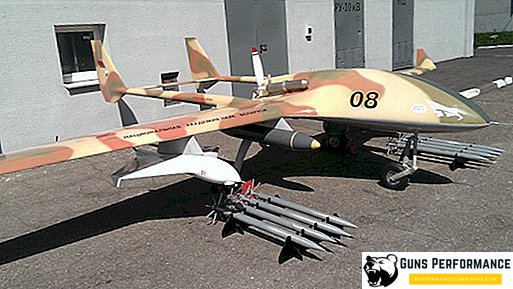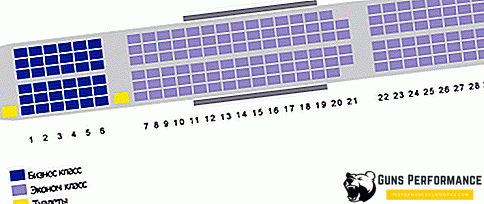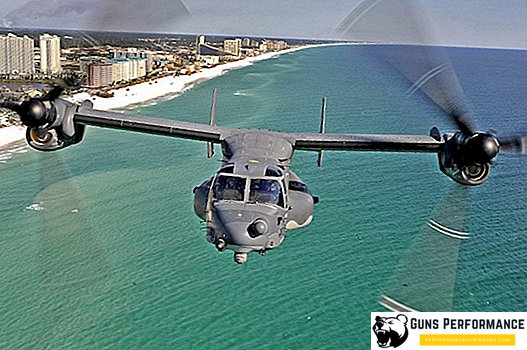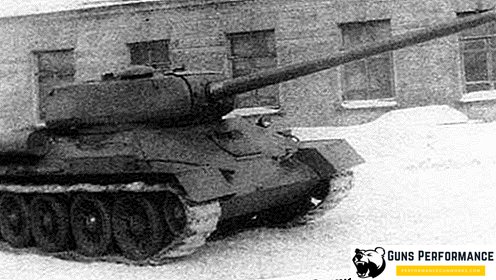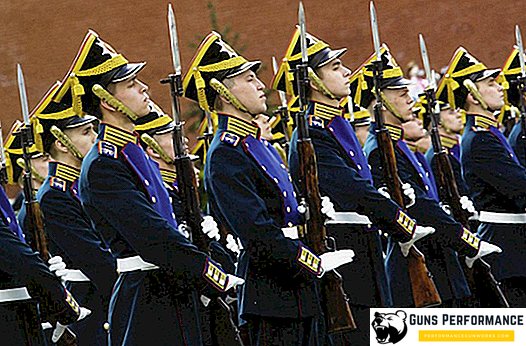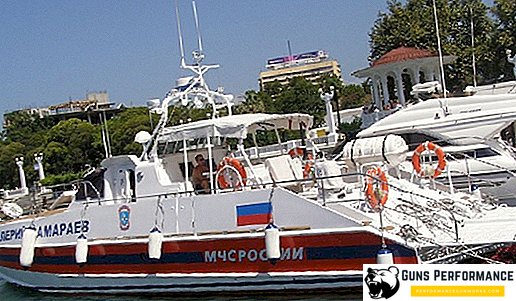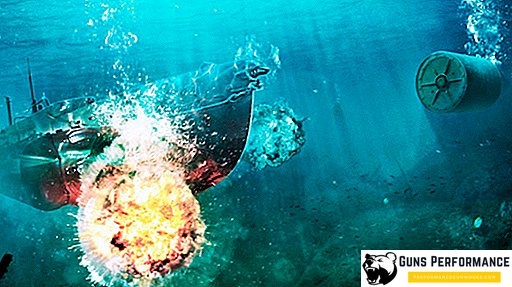
1966 BMP-1 Specifications
- Years of production: 1966-1983.
- Total manufactured: about 20,000 pcs.
- Combat use: military conflicts of the second half of the XX century, the war in Afghanistan.
- Crew - 3 people, landing - 8 people.
- Combat weight - 12.6 tons.
- Length - 6.74 m, width - 2.94 m, height - 1.88 m, ground clearance - 370 mm.
- Armament: 73-mm smooth-bore gun, ammunition - 40 shells. 7.62-mm machine gun, ammunition - 2000 rounds. ATGM "Baby", ammunition - 4 missiles.
- Armor thickness: 7-26 mm.
- Diesel engine, power 300 hp
- Maximum speed on the highway - 65 km / h, afloat - 7 km / h.
- Cruising on the highway - 600 km.
- Overcoming obstacles: a wall - 0.7 m, a ditch - 2.5 m.
Photo BMP-1


Infantry fighting vehicles (BMP) is a fairly broad class of military equipment, the main task of which is to deliver military personnel to the battlefield, increase their mobility, enhance protection and firepower of infantry. Modern BMPs can perform many functions, they are trained to support tanks on the battlefield, and if necessary, they can successfully fight them. These combat vehicles have a very rich history.
The idea that the infantry also needs armor protection first occurred to the British during the First World War. However, the equipment of that time was very slow and extremely unreliable. The tanks were not too fast-moving, and the infantrymen could easily keep up with them and without any BMP.
But already in the thirties of the last century, in the era of the rapid development of tank technology, infantry fighting vehicles were remembered again. The Soviet Union created a large number of tanks and armored vehicles, but the vehicle for delivering infantry to the battlefield and its support was never made. The only thing you can remember is the B-3 semi-tracked armored personnel carrier, which was created before the war. He could carry up to 15 infantrymen. It was never adopted.

In Hitler's Germany, work in this direction was moving much more actively. German commanders who developed the concept of a lightning war, understood that the speed of movement is important not only for armored vehicles, but also for the infantry that follows it. By the beginning of the war, the Germans had created and launched the semi-tracked armored personnel carrier Panzergrenadir, which not only delivered fighters to the battlefield, but also often took part in battles, moving alongside tanks.
This type of military equipment received its second birth in the middle of the last century. The military doctrine of that time included the widespread use of tactical nuclear weapons. A car was needed that could protect the infantry from the damaging factors of a nuclear explosion and allowed soldiers to hit the enemy while inside the combat vehicle.
So the concept of creation of BMP was defined. This is a combat vehicle with high maneuverability, completely closed, which can not only lead the infantrymen to the battlefield, but also go with them to attack. Armor BMP had to reliably protect the crew from small arms, from fragments of artillery shells and from the damaging factors of weapons of mass destruction.
The BMP-1 was commissioned in 1966. This opened a new page in the history of the Land Forces of the USSR, significantly increasing their firepower and maneuverability, which led to a change in tactics for conducting combat operations. Turning to the description of the BMP-1, it should be noted that this is the first car with similar characteristics in the world.

The concept of the BMP-1 and the history of its creation
In the mid-60s of the last century, it became clear that the BTR-50P armored personnel carrier was outdated and it needed to look for a replacement. Immediately several Soviet design bureaus set to work. The design bureau of the Chelyabinsk plant developed a new combat vehicle, the BMP-1. She became the first in the world BMP, which launched into mass production. The main designer of this project was Isakov. Chelyabinsk presented several options for the future car.
In 1966, the BMP-1 was adopted, and in 1967 it was first shown to the general public during a parade in Moscow.
The BMP-1, in contrast to the armored personnel carrier, was supposed not only to deliver infantry, but also to support it in battle. The design of the machine involved the solution of such problems. On the BMP-1 was installed 73-mm cannon "Thunder", a machine gun, as well as the ATGM "Baby". A very good diesel engine B-2 was installed on the car.
It should be said that usually weapons stabilization systems, more advanced sights and fire control systems are installed on BMPs than on armored personnel carriers. The BMP is often installed fire extinguishing system, means of setting smoke screens. Although, the level of armor protection BTR and BMP are equivalent. The armored personnel carrier is usually armed with a machine gun, and cannon armament is more often installed on the BMP.

BMP-1 was produced in the USSR, Poland, the Czech Republic and India. The release of these machines was discontinued in 1988.
Creation and start of operation of this armored car fell on the period of rapid development of anti-tank weapons. The main complaints about this car, first of all, are related to the degree of its security.
Several NATO countries have adopted new sub-caliber shells that could hit the BMP-1 frontal armor at a distance of 1000 meters. The Bushmaster cannon mounted on the main American Bradley BMP could penetrate the BMP-1 armor at a distance of up to 2,000 meters.
The experience of the Afghan war and the Arab-Israeli conflict has shown that airborne armor makes its way through even with a 12.7 millimeter bullet. The hit of the anti-tank grenade led to the fire of the machine and the undermining of ammunition.
BMP-1 was in service with several dozen countries. In some places he is in the ranks today. This armored vehicle participated in conflicts in different parts of the world. There were numerous attempts to modernize the car. Their main goal was to strengthen weapons and improve armor protection. Often, instead of a smooth-bore “Thunder” cannon, an automatic cannon, grenade launcher or anti-tank complex was installed. Currently, about two dozen different versions of the BMP-1 are known. In addition, numerous machines have been created at its base that perform various special tasks. Describing them would take a long time. This includes staff vehicles, reconnaissance, ambulance, and even machines that are used in the national economy for purely peaceful purposes.

Description of the BMP-1
The engine on this machine is in the front (right), next to it (left) is the control compartment. The fighting compartment occupies the central part of the BMP, and behind it is the landing compartment, which holds eight paratroopers.
The armor is made of steel rolled sheets, which are installed at a large angle. On the sides of the BMP are loopholes, which are closed by special valves. The entire rear part of the car is occupied by the landing doors, which also serve as fuel tanks. The BMP tower is cast, round in shape. It has a 73mm Thunder cannon and a machine gun. Also BMP armed with anti-tank missiles "Baby".
BMP-1 can swim. Due to the shape of the hull and special guards, it can sail at a speed of 7 km / h. Movement in water is carried out by rewinding tracks. The track rollers are hollow, which improves the buoyancy of the machine.
A six-cylinder diesel engine is installed on the machine, which provides it with high mobility. Below is a description of the technical characteristics of the BMP-1.
TTX BMP-1
| Combat weight, kg | 12 600 |
| Crew, pers. | 3+8 |
| Main dimensions, mm | |
| Length | 6460 |
| Width | 2940 |
| Height | 2068 |
| Armament | |
| 73-mm gun "Thunder", ATGM "Baby" | |
| Loading mechanism | electromechanical |
| Sighting device | 1PN22M1 |
| IR illuminator | OU-3GA2 |
| Means of setting the veil | Tda |
| Engine | diesel UTD-20 |
| Maximum power, l. with. | 300 |
| Number of cylinders | 6 |
| Power density | 23,8 |
| Capacity of fuel tanks, l | 462 |
| Maximum speed, km / h | 65 |
| Power reserve, km | 600 |
| Reservations, mm | June 26 |
| Radio station | R-123M |
| Navigation equipment | GPC-59 |


